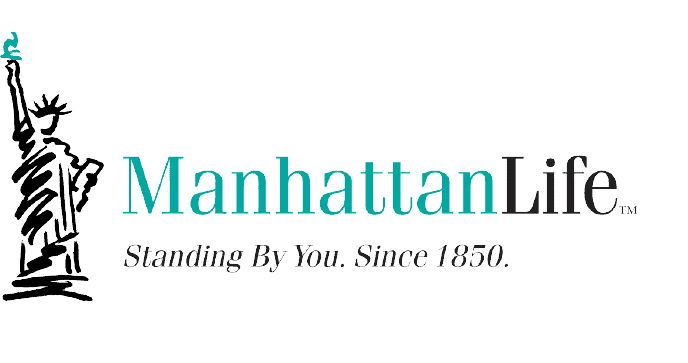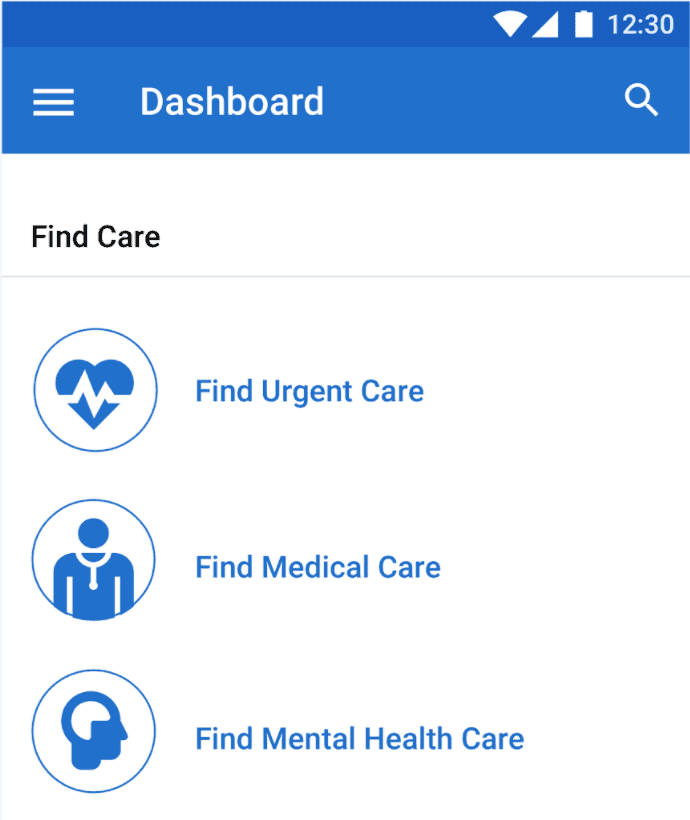
ManhattanLife Medicare Supplement Plan Reviews in 2025

Throughout 175 years, ManhattanLife has quietly built a solid reputation in the Medicare supplement market with competitive pricing and meaningful household discounts of up to 12%. While you may not recognize the name like you would Humana or Aetna, this stability-focused insurer offers five Medigap plans that could significantly reduce your Medicare out-of-pocket costs, especially if you qualify for their substantial discounts.
After more than 40 hours of in-depth research, we’ve broken down ManhattanLife’s Medicare Supplement Insurance plans. We delved into their pricing and stacked their benefits against the competition. Keep reading to discover why ManhattanLife could be a smart choice for your Medigap needs.
Pros and Cons
Pros
Long-standing stability and reliability: Established in 1850, ManhattanLife has exhibited remarkable longevity in the insurance market, and it consistently obtains top ratings from AM Best.1
Competitive household discounts: ManhattanLife’s household discounts, ranging from 7% to 12%, can substantially reduce premium costs.
No provider network restrictions: Beneficiaries can visit any health care provider that accepts Medicare, with no referrals needed for specialists.
Relaxed underwriting standards: Less stringent underwriting requirements could potentially make coverage more accessible to those with chronic conditions.
Cons
Limited plan selection: With only five Medigap plan types (A, C, F, G, and N) available, consumers have fewer choices compared to other providers like Humana.
Varying state availability: Since not every plan is available in every state, you’ll need to check what’s offered where you live.
Less comprehensive online tools: ManhattanLife’s digital resources and online account management tools are less developed than those of larger insurers.
Overview of ManhattanLife's Medigap Plans
ManhattanLife offers standardized Medicare supplement plans. All of them are guaranteed renewable, meaning your coverage can’t be dropped because of health issues.
| Benefits | A | C* | F* | G | N |
|---|---|---|---|---|---|
| Medicare Part A deductible | No | Yes | Yes | Yes | Yes |
| Medicare Part A coinsurance and coverage for hospital benefits | Yes | Yes | Yes | Yes | Yes |
| Skilled nursing facility care coinsurance | No | Yes | Yes | Yes | Yes |
| Hospice care coinsurance or copayment | Yes | Yes | Yes | Yes | Yes |
| First 3 pints of blood | Yes | Yes | Yes | Yes | Yes |
| Medicare Part B deductible | No | Yes | Yes | No | No |
| Medicare Part B coinsurance or copayment | Yes | Yes | Yes | Yes | Yes** |
| Medicare Part B excess charges | No | No | Yes | Yes | No |
| Foreign travel emergency (up to plan limits) | No | Yes | Yes | Yes | Yes |
*Plans C and F are only available to beneficiaries who became eligible for Medicare before January 1, 2020.
**Plan N covers 100 percent of the Part B coinsurance, except for copayments of up to $20 for office visits and up to $50 for emergency room visits that don’t result in inpatient admission.
Medicare supplement plans are the same across the country. For example, a Plan G from ManhattanLife offers the same core benefits as a Plan G from any other insurer. The differences lie in the cost, customer service, and any additional benefits or discounts.
For more information about standardized Medigap plans, see our complete guide to Medicare Supplement Insurance.
Finding the Right ManhattanLife Medigap Plan for Your Needs
ManhattanLife offers five Medicare Supplement plans, each designed to meet different health care needs and budget considerations.
Basic Coverage for Essential Protection
Plan A covers Part A coinsurance and hospital costs, Part B coinsurance or copayments, blood (first three pints), and hospice care coinsurance or copayment. This plan works well if you want lower premiums and don’t mind paying more costs out-of-pocket, including the Medicare Part A deductible.
Quick Tip: Plan A might save you money on premiums if you’re relatively healthy. But one hospital stay could quickly wipe out those savings since you’d have to pay the Part A deductible.
Comprehensive Coverage With Plan F
If you’re eligible (you became Medicare-eligible before January 1, 2020), Plan F gives you the most comprehensive coverage available. This plan covers all your out-of-pocket expenses for Medicare-approved services, including both Part A and Part B deductibles, excess charges, and foreign travel emergency coverage.
While Plan F used to be popular because it covers everything, rising premiums have made it less cost-effective for many people.
Maximum Value With Plan G
Plan G has become the most popular choice among Medicare Supplement plans. It gives you the same comprehensive coverage as Plan F, except you’ll still pay the Medicare Part B deductible ($240 in 2025). For most people, what you save on premiums compared to Plan F is more than this one out-of-pocket expense.
Did You Know? According to the Kaiser Family Foundation, Plan G has now surpassed Plan F as the most popular Medigap plan among new enrollees.2
Budget-Friendly Option With Plan N
Plan N gives you substantial coverage with cost-sharing features that help lower your monthly premium. With Plan N, you’ll pay up to $20 copays for some office visits and up to $50 for emergency room visits (waived if you’re admitted). You’ll also pay any Part B excess charges.
Plan N could be a good fit if you see your doctor a few times a year but don’t frequently need emergency care or specialty services where excess charges might apply. Not all providers charge Part B excess fees, but it’s worth checking if your preferred doctor does before choosing Plan N.
International Coverage for Travelers
Plans C, F, G, and N include foreign travel emergency coverage. This benefit covers 80% of medically necessary emergency care received outside the U.S. during the first 60 days of each trip, after a $250 deductible, up to a lifetime maximum of $50,000.
Understanding ManhattanLife Medigap Plan Costs
Premium costs vary based on age, gender, location, and the specific plan selected. ManhattanLife uses an attained-age rating system, meaning premiums start lower when you first enroll but increase as you age.
Their rates are generally competitive, especially when factoring in available discounts. The Spousal Discount (for married couples where both spouses have ManhattanLife Medigap policies) and Household Discount (for unmarried individuals who have lived together for at least a year) range from 7% to 12% depending on the state.
Plan G and Plan N typically offer the best value for most beneficiaries, balancing comprehensive coverage with affordable premiums.
Based on premium data across multiple states, here are approximate monthly premium ranges for a 65-year-old nonsmoking individual:
| Plan | Approximate Monthly Premium Range |
|---|---|
| Plan A | $120-$170 |
| Plan C* | $150-$220 |
| Plan F* | $150-$240 |
| Plan G | $120-$190 |
| Plan N | $90-$150 |
*Only available to beneficiaries eligible for Medicare before January 1, 2020.
Note: Premiums shown are before any applicable discounts and can vary significantly by location, age, gender, and other factors.
Enrolling in a ManhattanLife Medicare Supplement Plan
The enrollment process for ManhattanLife Medicare supplement plans is relatively straightforward, but timing can significantly impact eligibility and costs. Here’s what you need to know about securing coverage:
Medicare Supplement Open Enrollment Period
The best time to enroll is during your Medigap Open Enrollment Period, a six-month window beginning the first day of the month in which you’re both 65 or older and enrolled in Medicare Part B. During this period, you have guaranteed issue rights:
- You cannot be denied coverage based on health conditions
- You cannot be charged higher premiums due to health status
- You won’t face waiting periods for pre-existing conditions
Enrollment Outside Open Enrollment
If you apply outside your Open Enrollment Period, you’ll likely undergo medical underwriting. ManhattanLife has somewhat relaxed underwriting standards compared to some competitors, potentially making them more accessible to those with health conditions.
Application Process
To apply for a ManhattanLife Medicare supplement plan:
- Contact ManhattanLife directly or work with a licensed Medicare insurance agent
- Complete an application with personal information and Medicare details
- Answer health questions (if outside your Medigap Open Enrollment Period)
- Choose your payment method and frequency
- Submit your application and wait for approval
Comparing ManhattanLife to Other Medigap Providers
ManhattanLife vs. Mutual of Omaha
Mutual of Omaha offers a broader selection, including high-deductible versions of Plans F and G. Both companies maintain strong financial ratings, though Mutual of Omaha typically earns slightly higher marks. ManhattanLife potentially has an edge in underwriting flexibility for applicants outside the Open Enrollment Period.
To learn more, read our guide to Mutual of Omaha Medigap.
ManhattanLife vs. Aetna
Aetna offers more robust digital tools and wider geographic availability. Pricing varies by location. ManhattanLife sometimes offers more competitive Plan G rates, while Aetna had better Plan N pricing in many markets. Where ManhattanLife truly excels is in its household discounts and more flexible underwriting.
To learn more about Aetna, read out guide to Aetna Medicare Advantage.
ManhattanLife vs. Humana
Humana is more widely available across the country and offers more plan options than ManhattanLife. While ManhattanLife provides five Medigap plans, Humana offers up to eight in some areas, giving consumers a broader selection to meet their specific needs.
We also noted a significant difference in supplemental benefits. Many of Humana’s Medigap policies include valuable extras like a SilverSneakers fitness membership, whereas ManhattanLife offers separate dental, vision, and hearing plans, each with its own additional premiums.
To learn more, read our guide to Humana Medigap.
Did You Know? According to research from America’s Health Insurance Plans,3 Medicare beneficiaries with Medigap coverage report greater satisfaction with their health care costs and access than those with only Original Medicare.
Additional Benefits
Dental, Vision, and Hearing Coverage
ManhattanLife offers stand-alone dental, vision, and hearing plans since Original Medicare generally doesn’t cover routine dental care, vision services, or hearing aids.
Dental coverage includes preventive services (semi-annual exams, cleanings, X-rays) and basic services (fillings, extractions). Coverage typically starts at 60% in the first year, increasing to 80% by year three. Major services like crowns and dentures are 70% covered starting in year two.
Vision insurance covers basic eye exams and refractions, with glasses and contacts coverage after a six-month waiting period. Hearing coverage includes exams and supplies, with new hearing aids subject to a 12-month waiting period.
A notable advantage is the absence of provider networks. Beneficiaries can visit any provider and receive reimbursement based on their benefit level.
Quick Tip: When considering supplemental dental, vision, and hearing coverage, compare ManhattanLife’s offering with specialized senior dental plans and stand-alone vision coverage to determine which provides the best value for your specific needs.
Household Discount Program
ManhattanLife’s household discounts provide meaningful premium savings. The Spousal Discount applies when both spouses have ManhattanLife Medigap plans. The Household Discount extends to nonmarried individuals who have lived with another person (at least 60 years old) for a year or more.
Discounts range from 7% to 12% depending on state, representing significant potential savings over the policy’s life.
Evaluating ManhattanLife's Customer Service Experience
ManhattanLife has earned an A+ Better Business Bureau rating, reflecting confidence in their business practices and complaint resolution. Unlike larger insurers with extensive branch networks, ManhattanLife primarily provides telephone-based customer support rather than in-person offices.
Since Medicare processes claims for Original Medicare services (with Medigap automatically processing secondarily), the claims experience is generally consistent across companies. However, responsive customer service becomes valuable when billing issues arise.
ManhattanLife’s online tools, while functional, are less robust than those offered by larger insurers like UnitedHealthcare.
ManhattanLife Medicare Supplement Service Area
ManhattanLife offers Medicare supplement plans in most states, though specific plan availability varies by location. Like all Medigap carriers, they allow beneficiaries to use any health care provider that accepts Medicare, providing nationwide flexibility.
This flexibility is particularly valuable for those who divide time between multiple residences, as there’s no need to worry about coverage in different locations.
Assessing ManhattanLife's Financial Stability
ManhattanLife has demonstrated remarkable longevity since its founding. The company operates under the Manhattan Life Group, which includes Western United Life Insurance, Central United Life Insurance Company, and Family Life Insurance Company.
AM Best has assigned ManhattanLife a B++ (Good) rating since 1976, consistently finding the company financially sound. While not the highest possible rating, this indicates adequate financial reserves to meet policyholder obligations.
Many larger insurers carry A or A+ ratings, suggesting somewhat stronger financial positions. However, ManhattanLife’s positive rating combined with their long market history provides reasonable assurance of stability.
Methodology
We employed a systematic methodology focusing on multiple dimensions:
Plan Analysis: We examined ManhattanLife’s full range of Medicare supplement plans, comparing benefits against standardized guidelines and identifying unique features or limitations.
Premium Research: We gathered premium data across multiple states and demographics to understand pricing relative to industry averages and competitors.
Discount and Benefits Evaluation: We investigated discount programs and supplemental benefits, measuring potential savings against competitor programs.
Financial and Service Assessment: We reviewed A.M. Best ratings, company history, BBB ratings, and customer feedback to evaluate stability and satisfaction levels.
Our analysis emphasized factors most relevant to Medicare beneficiaries: coverage comprehensiveness, premium affordability, company stability, and customer service quality.
Conclusion
ManhattanLife stands out due to its long history, relaxed underwriting standards (beneficial for those outside the Medigap Open Enrollment Period), and flexible dental, vision, and hearing coverage. However, their plan selection is limited compared to larger competitors, online tools are less developed, and some supplemental benefits have waiting periods.
However, for Medicare beneficiaries seeking reliable supplemental coverage from a stable insurer, ManhattanLife is a solid option. Their Plan G offers excellent value and comprehensive coverage. Always compare ManhattanLife’s plans in your area with other providers before deciding.
Frequently Asked Questions
-
Which Medicare Supplement plans does ManhattanLife offer?
ManhattanLife offers five standardized plans: A (basic), C (comprehensive including Part B deductible), F (full coverage including excess charges), G (comprehensive except Part B deductible), and N (similar to G with certain copays). Plans C and F are only available to beneficiaries who became Medicare-eligible before January 1, 2020.
-
Does ManhattanLife offer a household discount?
Yes, household discounts range from 7% to 12% depending on state. The “Spousal Discount” applies when both spouses have ManhattanLife Medigap plans. The “Household Discount” extends to nonmarried individuals (at least one 60 or older) who have lived together for at least a year.
-
How does ManhattanLife's pricing compare to other Medigap providers?
ManhattanLife’s premiums are generally competitive, with Plan G and Plan N typically offering particularly good value. However, rates vary significantly by location, age, gender, and other factors, so obtaining quotes is important.
-
Does ManhattanLife offer dental, vision, and hearing coverage?
Yes, ManhattanLife offers stand-alone dental, vision, and hearing plans with graduated coverage that increases over the first three years. However, they include waiting periods: six months for glasses/contacts and 12 months for hearing aids and major dental services.
-
What is ManhattanLife's financial rating?
ManhattanLife has a B++ (Good) rating from AM Best, indicating adequate financial reserves to meet policyholder obligations. AM Best has rated ManhattanLife since 1976 and consistently found the company financially sound.





